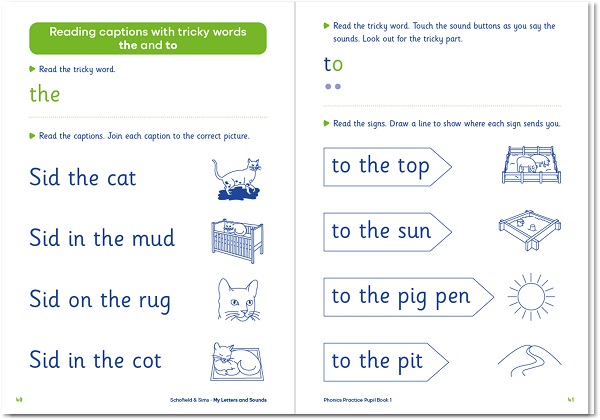Phonics: how to teach Tricky Words

Phonics trainer Jacqueline Harris shares her advice on one of the most frequently asked topics in early reading. Learning tricky words, or common exception words as they are sometimes known, relies on memory more than spelling rules, so how do you best support children that struggle with them?
What is a tricky word?
There are two types of tricky word. The first is words that are not yet decodable because children have not yet learnt the necessary grapheme-phoneme correspondences, but that are nonetheless really useful to know. In Reception, children learn words such as ‘go’ and ‘no’. The ‘o’ in these words, which is pronounced as /oa/ rather than /o/, only becomes decodable in Phase Five/Year 1. However, these are very useful words for both reading and spelling, so they are taught earlier. The second type of tricky word never becomes fully decodable, but as with all tricky words, part is decodable and can be sounded out and part is not. In the tricky word ‘people’, for example, the ‘p’ is always decodable in both places in the word, the ‘le’ becomes decodable in Year 1, but the ‘eo’ is an exception and never becomes decodable.
The word ‘the’ is the first really difficult word children encounter, as they learn to read it before they learn /th/. So how do you ensure children remember that it is a tricky word and not one that can be sounded out?
Repetition, repetition, repetition
A big part of teaching tricky words is repetition. The more frequently children see a word the more easily they remember it. This is true for spelling too and studies have shown that children who read more tend to be better at spelling.
"One of the things that contributes to being a good speller is being a good reader and reading a lot. You need to see a lot of words. And when you see words, you store them in a variety of ways: as sounds, as meaning and as patterns of letters. So, people who are strong visual learners have a distinct advantage when it comes to remembering correct spellings. Good spellers will employ a variety of strategies when figuring out how a word is spelled. Employing phonetics to put letters to sounds is a start, then applying the visual pattern rules (could and should, tries and cries) will get you most of the way there. After that, you have to decide if it "looks right."
To a certain degree, spellings are stored as pictures of whole words and the brain is fairly adept at recognizing a spelling it has seen before. So, if you read a lot, you will have a visual catalogue of words that non-readers lack.”
(Marilyn Chapman, director of the Institute for Early Childhood Education and Research at the University of B.C, Canada)
Therefore, tricky words need to be used all the time until children are really familiar with them. If, in addition, they can be identified when reading - for example, by being highlighted in a different colour as they are in the My Letters and Sounds Phonics Readers - that also helps children to remember they cannot sound all of the word out and that it is a tricky word.
Exposure is key
Simply put, children need exposure to these words all the time: in displays, during lessons and in activities focusing on tricky words. An activity such as ‘Word Swap’, which features regularly in My Letters and Sounds, works well to consolidate the learning of tricky words. In this activity the bulk of a sentence remains the same with only one or two words changing:
'Sid the cat'
'Sid in the mud'
'Sid in the cot'

Activity taken from My Letters and Sounds Phonics Practice Pupil Book 1
Some children may also find learning mnemonics for spelling some tricky words helpful – though it should be noted that not all children find mnemonics a useful tool. For example, when learning to spell the tricky word ‘because’, many children learn it through remembering the mnemonic ‘big elephants can’t always use small exits.’
A good phonics scheme will offer many ways of securing the reading and spelling of tricky words, and teachers may already have their own tried-and-tested methods of learning these words. In My Letters and Sounds, for example, tricky words are included in the teaching every week, with a variety of activities that are repeated throughout the year so that children can consolidate the reading and spelling of these words. One thing is clear however, they are called tricky words for good reason and they do take longer for most children to learn them.
comments powered by Disqus